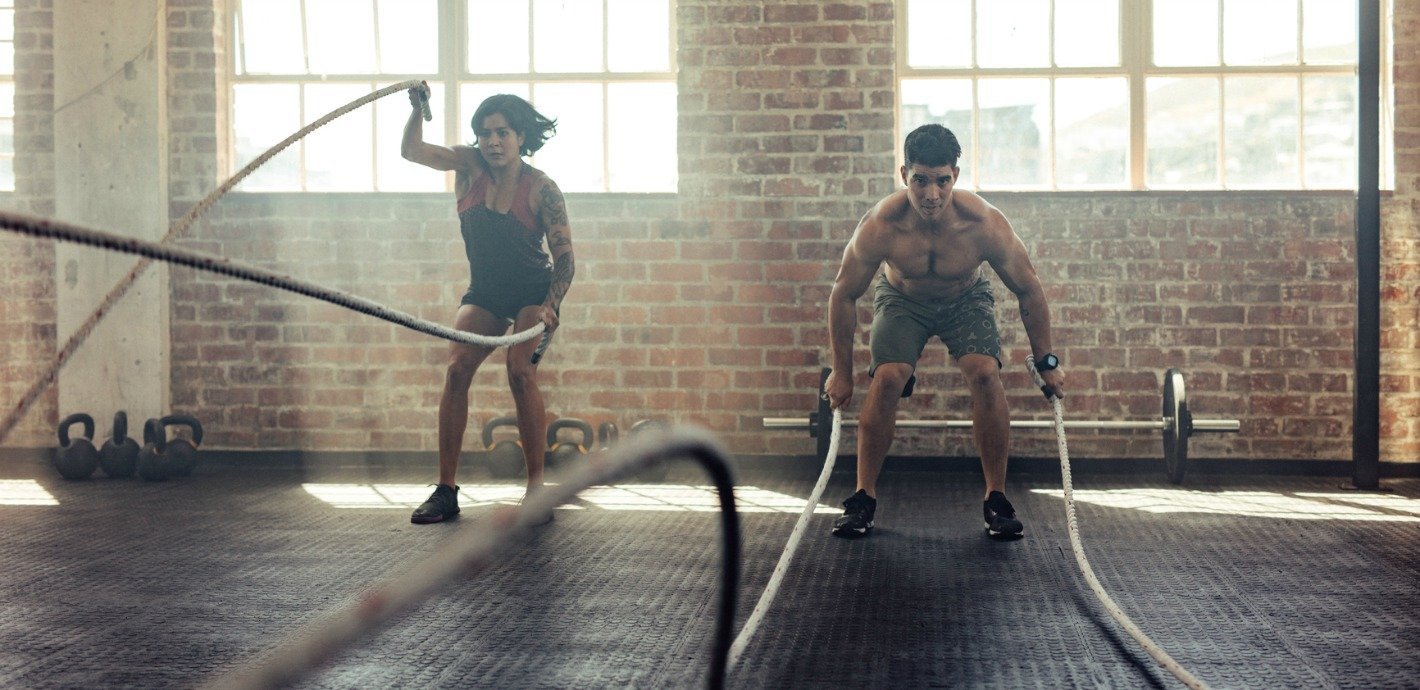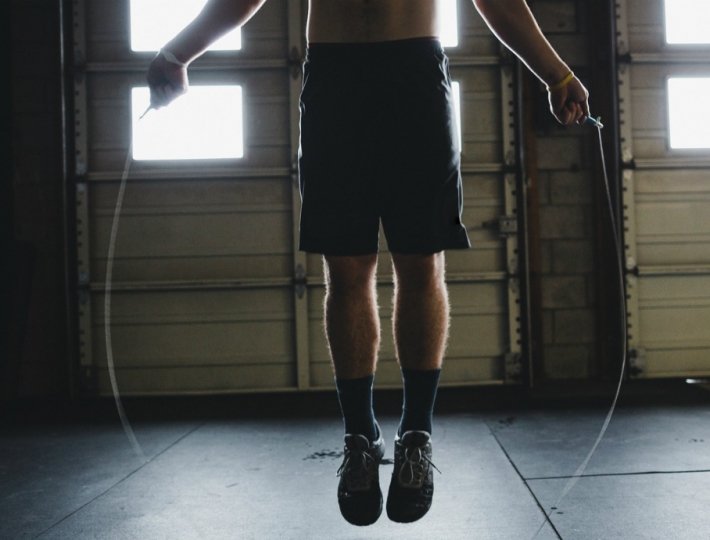When you’re always pressed for time, as most of us are, a workout (even one you look forward to) may often fall to the wayside in favor of another more important to-do, such as wrapping up work projects and driving the kids between appointments. This is where Tabata—a four-minute workout that conveys impressive cardiovascular and fat loss benefits—can help you get your sweat on in almost no time. You may never have to miss a workout again!
If you’re new to Tabata, it’s a specific type of high intensity interval training, or HITT, in which you alternate between 20-second bouts of all-out effort and 10 seconds of rest. A complete workout is eight rounds long, or four minutes total. The name comes from Japanese researcher Izumi Tabata, who in 1996 authored a study that showed athletes who trained on an ergometer (an exercise bike) for a total of 20 minutes per week experienced similar aerobic benefits to a group that performed more moderate exercise each week for five hours.
HIIT training techniques, like Tabata, appear to have an outsize impact on fat loss. A 1994 study from Quebec found that while exercisers who used HIIT burned fewer calories during the actual workout than those using longer endurance training, they lost nine times more fat. In 2008, Australian researchers, who compared the fat loss effects of HIIT and steady state cardio in young women, found that HIIT caused a significantly greater decrease in total body fat. Researchers aren’t sure why HIIT techniques are so adept at annihilating adipose. A 2011 review of 64 studies published in the Journal of Obesity chalked it up to several potential factors, including the hormonal response it causes (HIIT stimulates the release of fat-burning catecholamines) and a possible appetite-suppression effect.
For all of these reasons, Tabata has recently captured the imagination of trainers and other fit-minded individuals, who have applied the :20/:10 pattern to seemingly everything, even planks. And that’s where things have started to get wonky, and leads us to the part that everyone screws up.
Related: The Case for Exercising Less to Get the Results You Want
The crucial element of Tabata, according to Craig Marker, Ph.D., associate professor at Mercer University and Research Director at Strongfirst.com, is intensity. “The concept of Tabata training is to go at max effort,” Marker says. “One of the reasons that the original research was done on an ergometer was so that there would not be easy place to rest.”
That means any exercise in which there’s a natural place to pause—the top of a push-up, the bottom of a burpee, or the moment after you’ve landed from a jump squat, for example—isn’t really congruent with the technique. “Some athletes might be able to do a push-up in an all-out manner. The difficulty is that one could rest at the top or bottom of the movement,” Marker says, adding, “I am not sure many people have that much upper body endurance to do a push-up in a sprint-like manner.”
Your best bet is any exercise that has constant forward movement, or no easy place for rest. (Both of which are reasons why planks are definitely not Tabata-able.) “The key is to think about accelerating throughout the movement,” Marker says. “It will likely be impossible to keep accelerating for 20 seconds, but the idea is to push as hard as you can.”
You can effectively apply the Tabata protocol to the six exercises below, be in-line with the original study, and presumably be better able to capture similar cardiovascular benefits. But before you do, beginners should take a longer warm-up before diving in to the workout, and may want to scale back the intensity at first.
Keep in mind another often-overlooked fact about Tabata: During the original study, researchers would cut a subject’s workout off at seven intervals if the person was falling off pace. You should do the same—and may even want to wrap it up sooner if you feel like you’re dying a few rounds in, which given the intensity, you might. “I would strongly suggest that people stop at seven sets if their performance is slowing,” Marker says. “I stop most of my athletes at seven sets as it is difficult to maintain that pace for the full eight. Tabata’s team was working with elite athletes. For the everyday athlete, I might even suggest fewer sets, like three to five.” As you get used to the exertion, you can add intervals over time.
Here are six ways to tap into Tabata’s power—and test your own personal mettle.
TABATA WORKOUT #1: Sprints (run, bike, swim)
By land or sea, nothing exudes constant forward motion like a sprint. Mercer says the bike is probably a better bet for beginners. He also recommends against using a treadmill, which can take time to speed up and slow down.
TABATA WORKOUT #2: Jump Rope
Jumping rope in a Tabata format can be tricky if you tend to hit your feet with the rope a few times in a set. But if you can consistently get up and over the line, it’s a great Tabata option. Keep count of how many times you clear it during your first set, then try to hit or beat that number in your successive ones.
TABATA WORKOUT #3: Mountain Climbers
This move poses a dual challenge in that your upper body has to support you while you’re lower body stays in constant motion. Performing mountain climbers with your feet on a slideboard or on a set of Valslides (like this) will make it even more potent.
TABATA WORKOUT #4: Battle Rope Waves
You’ll probably have to head to a gym to get the right gear for this one (pictured above), although the heavy ropes are coming down in price. Remember to keep moving for the entire work interval (see sample moves here). This is another exercise where you can keep track of your reps on your first set (count every time your right arm moves as one), and try to meet or exceed that number on every set that follows.
TABATA WORKOUT #5: Prowler Sled or Plate Pushes
If your gym has a prowler or weighted sled, try pushing that as far as you can during every work interval. No prowler? No problem. Put one of the larger weight plates (a 25-, 35- or 45-pounder) on the floor and push that. Just be sure that you’re doing it on a surface that glides (astroturf is best) and that won’t get damaged by the plate.
TABATA WORKOUT #6: Kettlebell Swings
This is a skill movement—one that’s more technical and involved than you think. It’s definitely not supposed to be a bent-over half-squat with a shoulder raise at the end, which you will see some people do. Read up on how to swing properly before you dive in.












Comments (0)